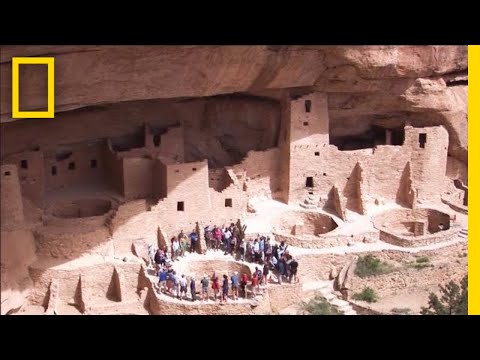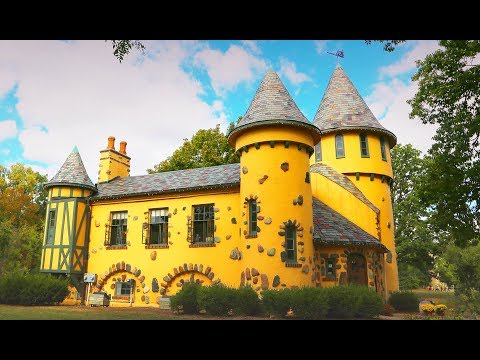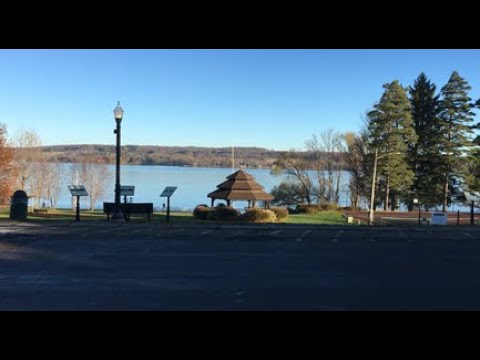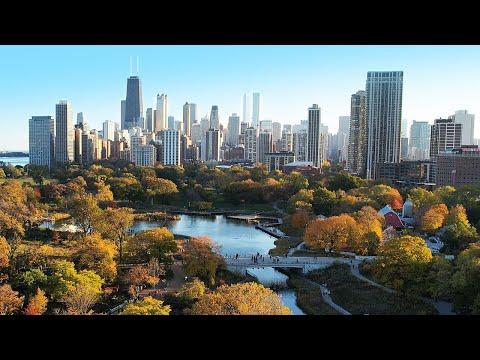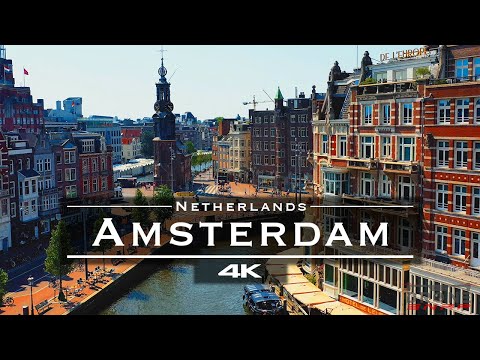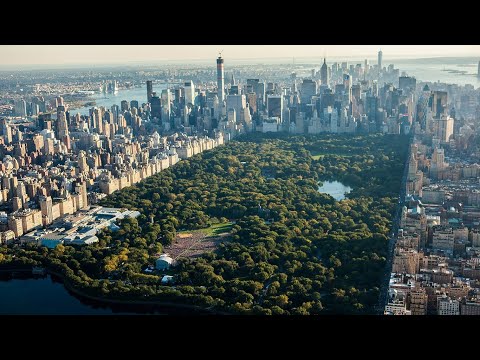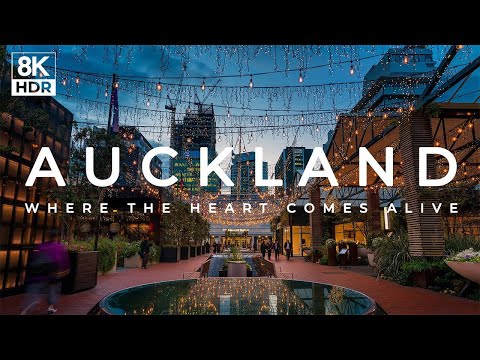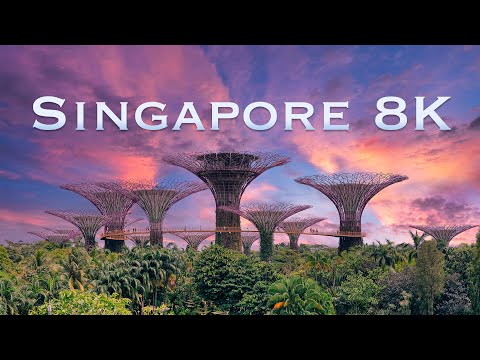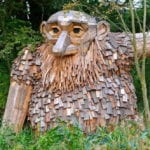10 Mesa Verde and the Anasazi
First up on our list is perhaps a unique outlier. Mesa Verde is not currently a populated city but rather is a national park protecting hundreds of unique species indigenous to the mesa and the ruins of the Anasazi people, who once lived and coexisted with their natural environment in the area. The former villages and cities of the Anasazi were built into and on top of the mesa, forming very distinct images. Like most Native peoples, the Anasazi were experts at living in peace with nature. They held a deep respect for nature and placed great focus on living in harmony with it, believing that doing so would lead to healthier lives, a belief that remains prevalent today.
9 Denver, Colorado
Nestled on the eastern edge of the Rockies, Denver had humble beginnings as a mining town during the mid-1800s Pike’s Peak gold rush. Nicknamed “the Mile High City” due to its position a mile above sea level, Denver has since grown to be its own county and the capital of Colorado. Known for its great ski slopes and its role in the game Horizon: Zero Dawn, Denver also has a plethora of green spaces. During the spring and summer, aerial shots of the city reveal a lush, green landscape surrounding a small cluster of skyscrapers. Denver has over two hundred parks and green spaces, the largest of which is simply called City Park. Covering a massive three hundred and fourteen acres, City Park is a neighborhood surrounded by a larger park space. Outside of the city itself, Denver has access to a wide variety of trails, national parks, and mountain peaks for the adventurous.
8 The Modern-Day Curwood Castle
Curwood Castle looks like it has been scooped right out of a fairytale. The structure was the home of James Oliver Curwood, an action-adventure novelist from the turn of the twentieth century with a taste for the fantastic. The house is like a miniature fairyland castle complete with flagstones, towers, and turrets. Perhaps more impressive than the castle itself is its location. The castle is set in the middle of a small park and is surrounded by trees on the banks of the Shiawassee River in Owosso, Michigan. It would have been the perfect getaway for an author looking for inspiration in nature. It has been preserved in that state and now serves as a museum and public park.
7 Chautauqua Lake, New York
The Chautauqua Lake region of New York is a brilliant mixture of small towns and rolling forests. Located an hour and a half from Niagara Falls, Chautauqua Lake was originally used for ice mining during the harsh, upstate New York winters. Miners would carve chunks of ice out of the frozen lake and pack them into wagons to be shipped across New England. While the days of ice mining are gone, much of the area remains unchanged. Towns are nestled in forest clearings, and buildings are placed wherever there is free space. During the summers, special events are held that send tourists and natives alike out into the wild, and while the ice is no longer mined for trade purposes, it is used to form incredible ice sculptures in the winter. Perhaps my favorite is the number of wildlife we see here. It’s quite common for deer and other forest critters to come up to people (we have three deer who live somewhere by our house. They sometimes stop by and say “hi”). The only way to make the area more fairy tale-esque would be if there was a castle nearby. Maybe Curwood Castle could be relocated?
6 The Ruralization of Chicago, Illinois
Located on the shores of Lake Michigan, Chicago is currently the third-most populous city in the United States, with no sign of slowing down its growth. The city suffered a major setback due to the aptly named Great Chicago Fire but has since recovered. This is nowhere more apparent than the city’s Green Healthy Neighborhoods initiative. Over the past several years, Chicago has begun renovations of some of its older, less safe neighborhoods with the goal of transforming them into a massive thirteen square mile area of parks, farms, and trails. This process has been ongoing, and the results are already apparent from the beautiful green streaks now seen throughout the city.
5 Amsterdam, Netherlands
Amsterdam’s old. Older than most other places on this list, Amsterdam was first settled by farmers millennia ago. Since those humble beginnings, it’s grown to be the capital of a nation, one that pulls many people from across the world. Amsterdam’s people coexist with nature in perhaps more obvious ways than others. For starters, many of their streets are paved with water. Amsterdam is well known for its canal system, a result of very careful planning when Amsterdam’s immigration rates began picking up. Perhaps because of this, the streets are lined with a verdant array of trees, and parks dot the city, including the Vondelpark, Amsterdam’s largest green space and one that attracts millions of visitors each year. It’s a city that’s really in touch with its surroundings.
4 Central Park, New York City
When one is asked about places where you can find nature and people together in the U.S., one might naturally jump to New York City’s Central Park. The massive stretch of green stands out in stark contrast with the surrounding office buildings and skyscrapers, a man-made frame of steel and glass for the beautiful green canvas. Watch this video on YouTube Central Park is two and a half miles long, half a mile wide, and is over seven hundred acres in area. The park receives millions of visitors each year and is one of the most touristed areas in the United States. Hidden amidst the foliage are an abundance of attractions, including a mall, a castle, several taverns, and a zoo, to name a few. It truly is a marvel and a place where people coexist with nature.
3 The Majesty of 25 Verde
Almost a small village in and of itself, 25 Verde is a building, a garden, and an art piece rolled into one. Located in Milan, Italy, the building was first conceived by Luciano Pia, who has a talent for blending the natural and the man-made. Pia’s goal was to bring the nearby hills into the city and give it some more green space, and he succeeded. 25 Verde is a three-sided, box-shaped apartment building surrounding a beautiful, raised park. Trees, flowers, and greenery cover its terraces and available surfaces, and even the buildings were built to blend in with green paints and rust-colored steel. The combined efforts of the real plants pull hundreds of liters of carbon dioxide from the air. This makes it act almost as a living filter for Milan, the birthplace of Fiat, and one that, if well maintained, should last for years to come.
2 Auckland, New Zealand
As any fan of The Lord of the Rings can tell you, New Zealand is gorgeous. Wide, sweeping grasslands run along stony hills and through forests, right down to the banks of Auckland, the country’s largest city. Established by the Maori, joined by the British, originally the capital before Wellington, and now an international melting pot of cultures, Auckland also serves as an introduction to New Zealand’s natural wonders. Besides the nearby beautiful rolling hills, Auckland was built on the Auckland Volcanic Field, a group of volcanic points that have been largely dormant for the past several thousand years. The Maori used many of the mountains (which they call “maunga”) as fortifications. A few of the remaining maunga have been preserved and integrated as parks and monuments, truly a unique way to integrate nature.
1 The Blended Urban Forest of Singapore
The island city-state of Singapore is, perhaps, the most environmentally friendly city globally. There are several places in Singapore itself that could have made this list, including the massive airport, which contains a zoo and a new, massive park, and a giant man-made waterfall. Rather than fill the entire list with those, we’ll just tackle the entire city as one spot. Everything about the modern city has been designed to strengthen the environment, from the decades-in-advance planning to the positioning of its blocks, streets, and parks. Much of the new construction is covered in greenery, and efforts are being made to increase those green spaces and preserve the natural environment and wildlife. Even its farms have been revolutionized, turned into vertical, indoor structures. There aren’t many modern places more in touch with their environment like Singapore.
